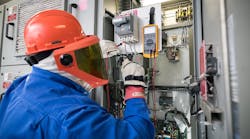Ted is an electrical engineer with senior responsibilities at a large data center. He is fond of saying, “You can’t be too paranoid.” Given that a single downtime incident, even one lasting less than a minute, costs this facility more than $2 million, this seems like a reasonable assessment. But that’s not why Ted makes that comment. Avoiding a mistake that triggers downtime is just a side benefit for him.
His main concerns:
• Personal safety. He never assumes, but tries to think of every possibility that could go wrong. Then he takes the preventive measures to ensure they don’t go wrong. He verifies, cross-checks and tests. He also likes to say, “I want to be an old engineer some day.” Even though he’s been through a series of promotions that have moved him mostly to desk work, he still gets out in the field.
• Personal pride. This isn’t the vanity sort of pride, but a deep pride in doing work correctly and efficiently. Nobody is proud of having to do work over, so doing it right the first time is essential for people who take pride in their work.
• Team safety. He is in a senior position. If he isn’t paranoid enough, he feels he isn’t leading others by example. He interacts with others in a way that communicates the need to check and recheck, and to do so methodically using prescribed methods.
• Team pride. He wants all of those in his chain of command to be proud of their work. If these people “put vanity over being adequately paranoid, something will break.”
• Efficiency. You might think that someone who is spending time checking and rechecking is inefficient. But by not having to do work over, you get a big efficiency gain. Ted also is paranoid about the tools used to do the work, and he’s made test equipment evaluation an ongoing process. He doesn’t think of an expenditure for a new item as an equipment upgrade so much as an outcome upgrade.
You have probably figured out by now that Ted is taking some liberties with the word “paranoia.” But the reality is that your level of concern does need to be something an outsider might consider paranoid or compulsive.
It’s easy to get settled into a comfortable perspective and dial down the vigilance. This is something to guard against, and the only way to do that is to actively go in the other direction — exactly as Ted does.
And you can’t do that in spurts. If you’re going to be paranoid enough to really make a difference, you need to be programmatic about it. Here are some ideas to help you get there:
• Establish specific areas. Basically, you need to identify your areas of responsibility. This isn’t as straightforward as it may seem. It’s not just your official duties. It includes anything that can come back to bite you.
• Break the routine. This is the hardest step for anyone. If you’ve been doing a job a certain way and nothing bad has happened, it feels like that way is working. But it could just be a version of Russian roulette.
• Consult others in the industry. This will help you think about how you do things compared with how they do things. It’s a great way to expose weaknesses you can then correct. Attending industry events (e.g., trade shows) and meeting up with folks is one way to make these consultations happen.
• Freshen up on industry standards. These change with time to adapt to a changing technical and regulatory environment.
• Attend webinars. Many manufacturers provide webinars that can help make you better informed and more capable of exerting the right amount of paranoia on the job. Visit the websites of your equipment and test equipment vendors, and see what they are offering along these lines.
• Set up an efficient review process. There is a difference between methodically reviewing work and mindlessly, compulsively going over it ad nauseam. Without a formal system to do the former, you will let mistakes through even if you do the latter. You can’t just stare at things and expect mistakes to jump out.
And one last idea. All of those other ideas won’t help very much if you fail to adopt the same mindset Ted has adopted. This is the mindset that, for example, has a test technician assessing the work area for dangers (and how to protect against them) before pulling out the first tool.
It’s the mindset that realizes people make mistakes and that doesn’t count on luck as a solution. You can’t be too paranoid, but one moment of carelessness can wipe out everything.





